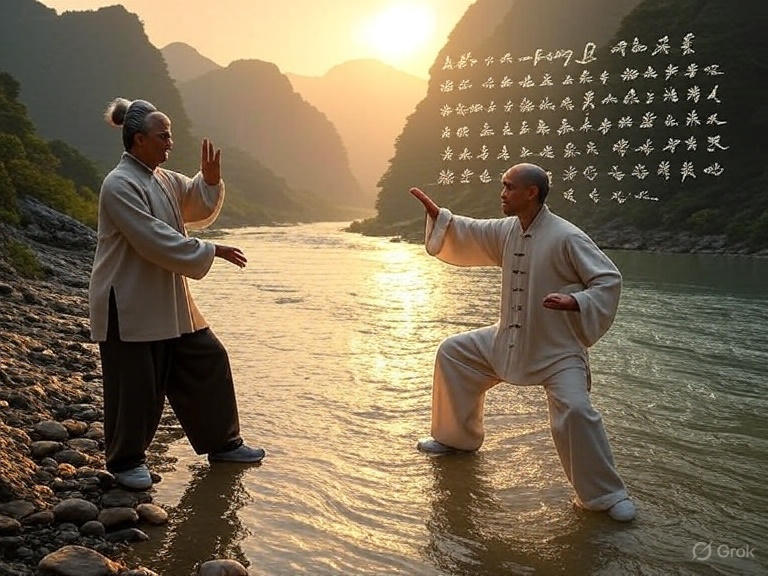What Is Wu Wei? An Introduction to Effortless Action in Taoism

A Fresh Look at Wu Wei
Wu Wei (無為) is often rendered as “non‑action,” “effortless action,” or “doing nothing.” Yet none of those translations capture its true spirit. Wu Wei is not laziness or passive resignation; it is the art of moving in perfect harmony with the Tao (道)—the natural order that underlies all of existence. Think of water slipping around stones, a basketball player “in the zone,” or a river that carves a canyon without ever forcing its way forward. In each case the outcome is achieved not by brute force but by aligning with the flow of reality.
Historical and Philosophical Roots
Origins – The idea first surfaced during the turbulent Spring and Autumn period (770‑481 BCE), when Chinese thinkers searched for a way to restore balance amid social upheaval.
Classical texts –
- Tao Te Ching (attributed to Lao Zi) declares, “The Dao abides in non‑action, yet there is nothing it does not accomplish.” The paradox shows that true power comes from surrender, not domination.
- Zhuangzi expands the notion through vivid parables—most famously the story of Cook Ding, whose knife glides through an ox by following the animal’s natural structure rather than brute cutting.
Cross‑cultural influence – While Taoism treats Wu Wei as a personal cultivation practice, Legalist thinkers such as Shen Buhai applied it to governance, advocating minimal interference. Later, Chan (Zen) Buddhism borrowed the principle to describe spontaneous, mindful presence.
Common misreading – Critics sometimes label Wu Wei “escapism.” In reality, attaining it requires disciplined self‑cultivation: learning when to act and when to refrain, so that one’s deeds match what the situation ought to be.
Core Principles
| Principle | What It Means | Illustrative Image |
|---|---|---|
| Harmony with the natural flow | Act like water—soft, adaptable, yet inexorable. | Bruce Lee’s quote: “Be like water…adjust to the object, and you shall find a way around or through it.” |
| Effortless spontaneity | Drop self‑conscious desire; let intuition guide you. | Cook Ding’s knife moving through the ox’s natural gaps, lasting 19 years without dulling. |
| Non‑interference | Create conditions for growth and then step back. | A ruler who governs by “not governing,” allowing the people to thrive unnoticed. |
These ideas are not calls for inactivity; they are calls for right activity—action that fits the “round peg in the round hole.”
From Antiquity to Everyday Life
Ancient examples
- Governance: During China’s “Golden Age” of stability, emperors practiced light‑touch rule, fostering prosperity through non‑interference.
- Martial arts: Tai Chi movements flow without tension, embodying Wu Wei’s yielding strength.
Modern, everyday analogues
- Communication: Sending a quick, honest text without over‑editing—trusting your gut yields authentic connection.
- Sports: A surfer rides a wave, becoming one with the ocean rather than battling it.
- Parenting: Guiding a child by example instead of constant correction, allowing their innate nature to unfold.
Social media conversations now equate Wu Wei with “swimming with the current” in productivity—a reminder that forced hustle often stifles creativity.
Applying Wu Wei in a Hustle‑Driven World
- Work – Align tasks with your natural energy peaks. Pause before making decisions; trust teammates’ strengths instead of micromanaging. This reduces stress and unlocks creative breakthroughs.
- Personal growth – Set clear intentions, then release attachment to outcomes. Practices such as mindful walking or breathwork help you attune to your inner rhythm.
- Relationships – Listen fully, free of hidden agendas. Respond to the moment, fostering deeper bonds without ego‑driven scripts.
- Creativity – Artists like Tang‑dynasty painter Zhang Zao surrendered to inspiration, allowing spontaneous brushstrokes to capture essence rather than painstaking replication.
Why Wu Wei Matters Today
In an age of relentless notifications, deadline pressure, and the myth that “more effort equals more success,” Wu Wei offers a radical antidote. It teaches that the most powerful achievements arise from releasing friction, not from grinding harder. By embracing effortless, aligned action, we can:
- Reduce burnout and mental fatigue.
- Enhance problem‑solving by allowing insights to surface organically.
- Cultivate richer, more authentic connections.
As Lao Zi observed, “When you work with Wu Wei, you put the round peg in the round hole.” The lesson is timeless: success is less about forcing a fit and more about recognizing—and moving with—the shape that already exists.
Takeaway: Wu Wei invites us to stop fighting the current and start flowing with it. Whether you’re drafting a report, practicing a sport, or simply chatting with a friend, ask yourself: Am I pushing against the tide, or am I moving with it? The answer will point you toward a more harmonious, productive, and fulfilling way of living.